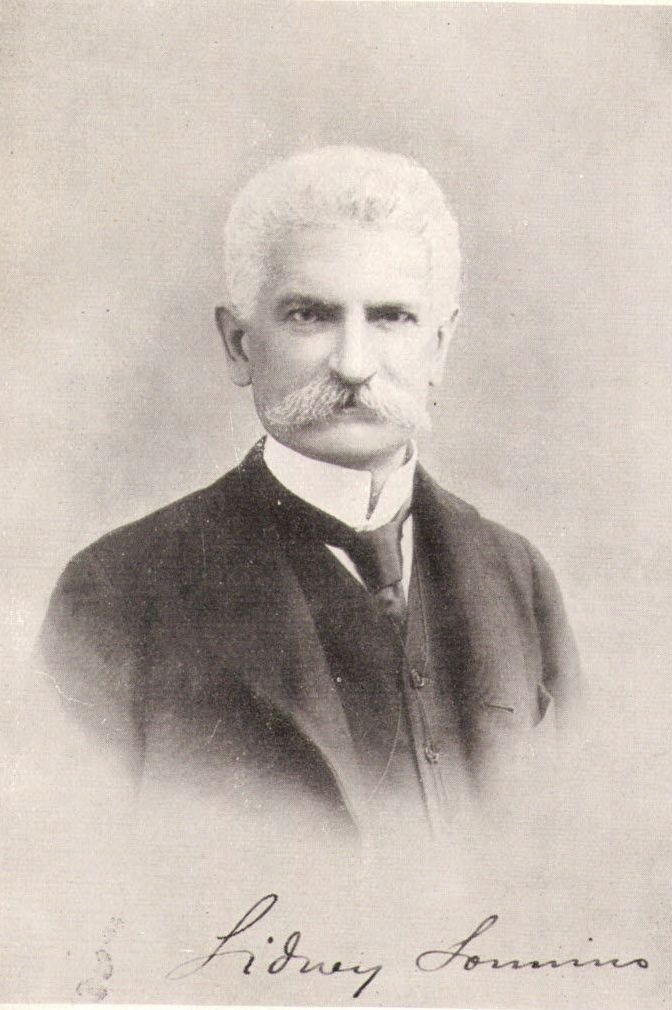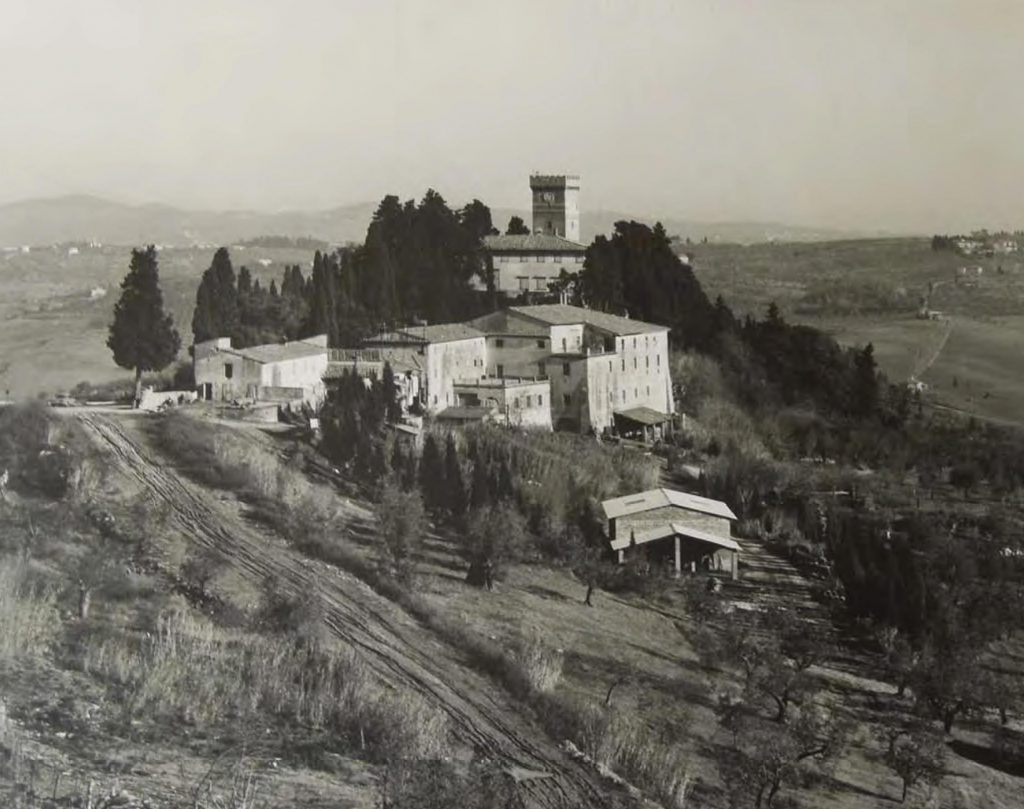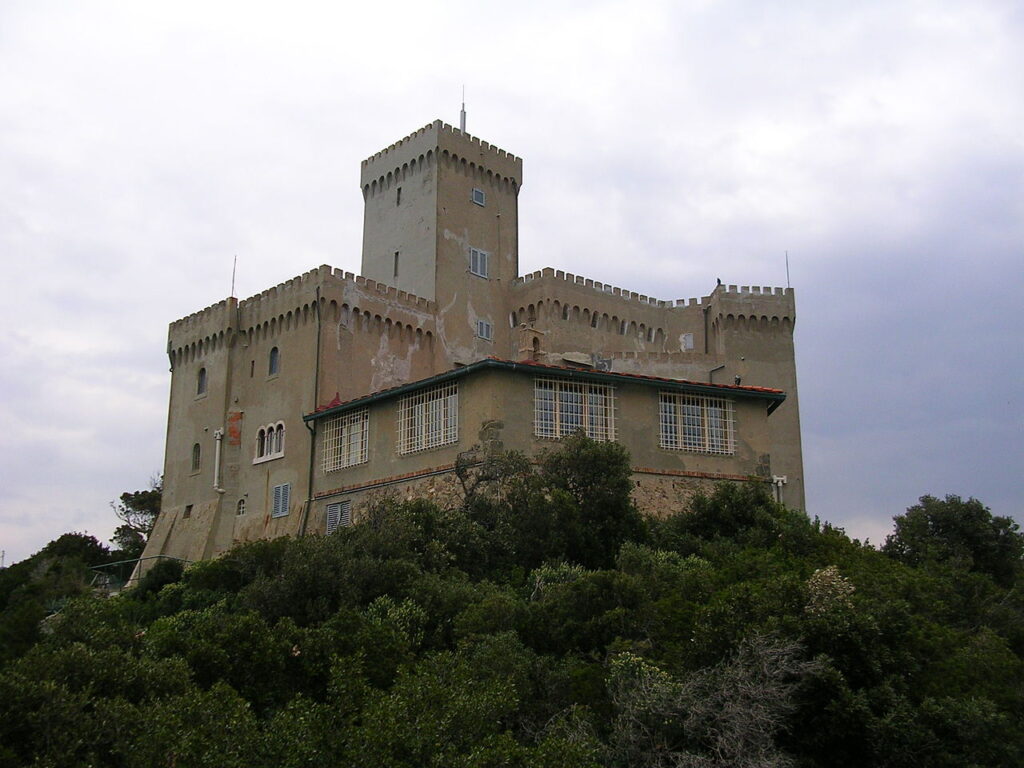Solido fortilizio mediceo del XVI secolo, arroccato suggestivamente a picco sul mare.
La località prese il nome di Romito dalle cavità naturali presenti nella roccia che servirono da romitorio ai Gesuati di Montenero che spesso qui si ritiravano. Si dice che il castello fu regalato al barone e ministro Sidney Sonnino dal re Vittorio Emanuele II.
In origine il Castello fu fatto costruire da Cosimo III a difesa della costa nel 1702 sui resti di una precedente fortificazione in località romito.
Solid Medici fortress of the sixteenth century, perched suggestively overlooking the sea.
The locality took the name of Romito from the natural cavities present in the rock that served as a hermitage for the Gesuati di Montenero who often retreated here. It is said that the castle was given to the baron and minister Sidney Sonnino by King Vittorio Emanuele II.
Originally the Castle was built by Cosimo III to defend the coast in 1702 on the remains of a previous fortification in the locality of Romito.
Passò poi ai Lorena e nel 1799 ai francesi.
A seguito della riconquista da parte delle truppe al comando dell’Inghirami, il castello divenne proprietà dei Peruzzi e poi nel 1895 dell’allora Ministro delle Finanze e degli Esteri Sidney Sonnino, che è sepolto in una delle grotte naturali che circondano la mura. La villa fu fatta erigere dal Sonnino sopra una scoglio a circa 100 m di altezza sul mare.
Narra una leggenda che Il nome romito nasca dal fatto che nel 1495 nel castello, il cavaliere francese Ernesto d’Estrangues si sia lasciato morire in solitudine per il rimorso di aver tradito il suo re (Carlo VII) per amore della nobile pisana Gabriella Lante.
It then passed to the Lorraine and in 1799 to the French.
Following the reconquest by the troops under the command of the Ingirami, the castle became the property of the Peruzzi family and then in 1895 of the then Minister of Finance and Foreign Affairs Sidney Sonnino, who is buried in one of the natural caves surrounding the walls. The villa was built by Sonnino on a rock about 100 m above the sea.
Legend has it that the hermit name arises from the fact that in 1495 in the castle, the French knight Ernesto d’Estrangues let himself die in solitude out of remorse for having betrayed his king (Charles VII) for the love of the Pisan noblewoman Gabriella Lante.

La famiglia de Renzis Sonnino ha vissuto nelle stanze del Castello di Montespertoli dall’inizio dell’Ottocento quando fu acquistata da Isacco. Era la casa del grande statista Sidney Sonnino durante gli anni del suo governo. Nel 1987 l’arrivo del barone Alessandro e della baronessa Caterina de Renzis Sonnino, con i loro figli Virginia e Leone, segnò l’inizio di una nuova fase nella vita del castello. Il restauro conservativo, l’impegno per la tutela del patrimonio storico-culturale e il rilancio dell’attività vitivinicola hanno reso il Castello Sonnino uno dei siti più interessanti e uno dei migliori produttori del
Chianti fiorentino.
Oggi la proprietà è frutto dell’impegno del barone Alessandro e della baronessa Caterina de Renzis Sonnino. Hanno restaurato la villa che contiene anche l’archivio storico Sidney Sonnino e hanno fondato il “Castello Sonnino International Educational Center” che collabora con università americane e canadesi, organizzando programmi di studio.
The de Renzis Sonnino family has lived in the rooms of the Montespertoli Castle since the early nineteenth century when it was bought by Isaac. It was the home of the great statesman Sidney Sonnino during his years of rule. In 1987 the arrival of Baron Alessandro and Baroness Caterina de Renzis Sonnino, with their children Virginia and Leone, marked the beginning of a new phase in the life of the castle. The conservative restoration, the commitment to the protection of the historical and cultural heritage and the relaunch of the wine business have made the Sonnino Castle one of the most interesting sites and one of the best producers in the
Florentine Chianti.
Today the property is the result of the commitment of Baron Alessandro and Baroness Caterina de Renzis Sonnino. They restored the villa which also contains the Sidney Sonnino historical archive and founded the “Castello Sonnino International Educational Center” which collaborates with American and Canadian universities, organizing study programs.

